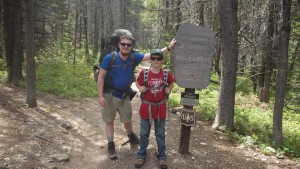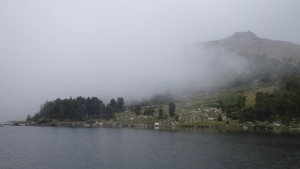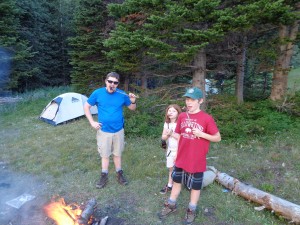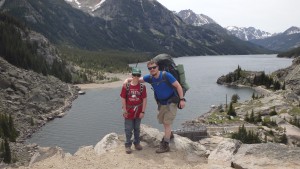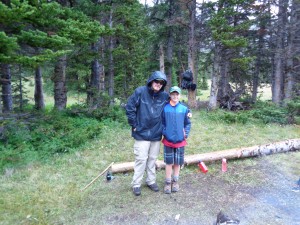Planning a Backpacking Trip
Planning a Backpacking Trip
Planning a backpacking trip is the least exciting part of backpacking. Figuring out where to go, what gear to carry, what to eat, and transportation is the backpacking equivalent to working in an accounting office. However, as an accountant is invaluable to the company that he or she works for, proper planning of a backpacking trip is equally important. Not to sound over-dramatic, but planning a backpacking trip properly can literally mean the difference between life and death. You can survive without food for weeks or drink contaminated water for days, but if you plan a trip poorly, you can die within hours.
There is a saying in the U.S. Marines, if you’ll excuse the language, that holds true here: “Proper prior planning prevents piss poor performance.”. The most important part of a backpacking trip is the planning that occurs days or weeks before your boots hit the trail. In order to plan your hike properly, you will need to research the area thoroughly. You wouldn’t want to hike down a trail for several days based on a whim- you will want details about your destination; details such as topo maps, weather conditions, and a trail guide. Although some may argue against using a trail guide (it removes the spirit of discovering the trail for yourself), a backpacking trip sometimes will depend on critical information about the trail. You don’t need to hire a trail guide to backpack on a new trail, an online guide or book is more than sufficient. One danger that is always present on any trail, however, is the weather.
Checking the weather before any hiking trip can make a huge difference on your comfort and safety. If you plan a hike or backpacking trip with the expectation of 70 degree highs, a sudden storm can easily change that to 40 degree highs, with pouring rain. The old scout motto, “Always be prepared.” rings true here- you must always be prepared for a change in the weather. Before you head out, double check the weather forecast in the area you will be hiking. When you read the forecast, be sure to judge it based on your skill level. If you are new to backpacking, you probably don’t want to spend three days in the rain. With the weather planned for, the next step is to have detailed maps of the area.
Maps are a wonderful thing- they can tell you what’s ahead on the trail, or help you figure out where you lost the trail. If you are hiking in an unfamiliar place, it is always a good idea to bring at least one map with you; with the convenience of the Internet, it is foolish to leave home without at least one map. Maps can be downloaded in PDF format from the USGS website, purchased through online retailers, or downloaded onto a GPS. A good map will also allow you to plan your meals better, which can make a difference in your speed and comfort on the trail.
With backpacking food, you have many options. Ready to eat meals (MREs) are as convenient as it gets- you can open a pouch and enjoy your meal. Other options, such as freeze dried meals, require some additional preparation (adding boiling water). My personal favorite is to blend the two options. I like to plan lunches that are quick to make, while dinners are more time consuming. This allows you to be quick on your feet during the day (when you need to make good time on the trail), and allows you to spend more time cooking at night. One of the biggest mistakes backpackers make is to fall behind schedule, rush to make up time, and have an accident on the trail.
Most injuries on the trail can be are due to two things: improper physical conditioning, or improper gear. Your physical condition should be one of your top priorities during the hike planning process. You should wear your backpack, be familiar with your backpack, and even go on short day hikes with your backpack. Before you drive to the trailhead, you should be in the best condition possible, since you will feel tired and sore along the trail. Your lungs will be weakened from the thin air, and your muscles will cramp from the strain of carrying a heavy backpack. While your physical condition should be your top priority in the weeks before your trip, your gear should be planned in advance as well.
Essential backpacking gear seems simple- a good backpack, good boots, and good rain gear are all that most people need. I could go into detail on extra gear, but I won’t- many other articles have been written on backpacking gear. Instead, I’m going to focus on the three most important pieces of gear. To start, your backpack should be comfortable, spacious, and water resistant. Your backpacking plans won’t amount to anything if you have a blister on your shoulder, if you can’t carry all of your gear/food, or if it’s soaked in the rain. Plan ahead, and purchase a quality backpack that provides all of these features- you won’t regret it. For your boots, pick a pair of boots that are comfortable, and break them in before your trip. This prevents painful blisters, which can ruin a trip. Lastly, water resistance is a necessity for your tent, and your backpack- it keeps your gear and clothes dry, preventing hypothermia. Water proofing your gear is easy, and you should do it yearly.
As boring as planning a backpacking trip is, proper planning can prevent an accident on the trail, or make your backpacking trip more pleasant. Although it might seem time consuming to plan your trip, it is something that must be done. You don’t want to waste time shivering in the cold, and never reach that trout filled lake, due to improper planning.
